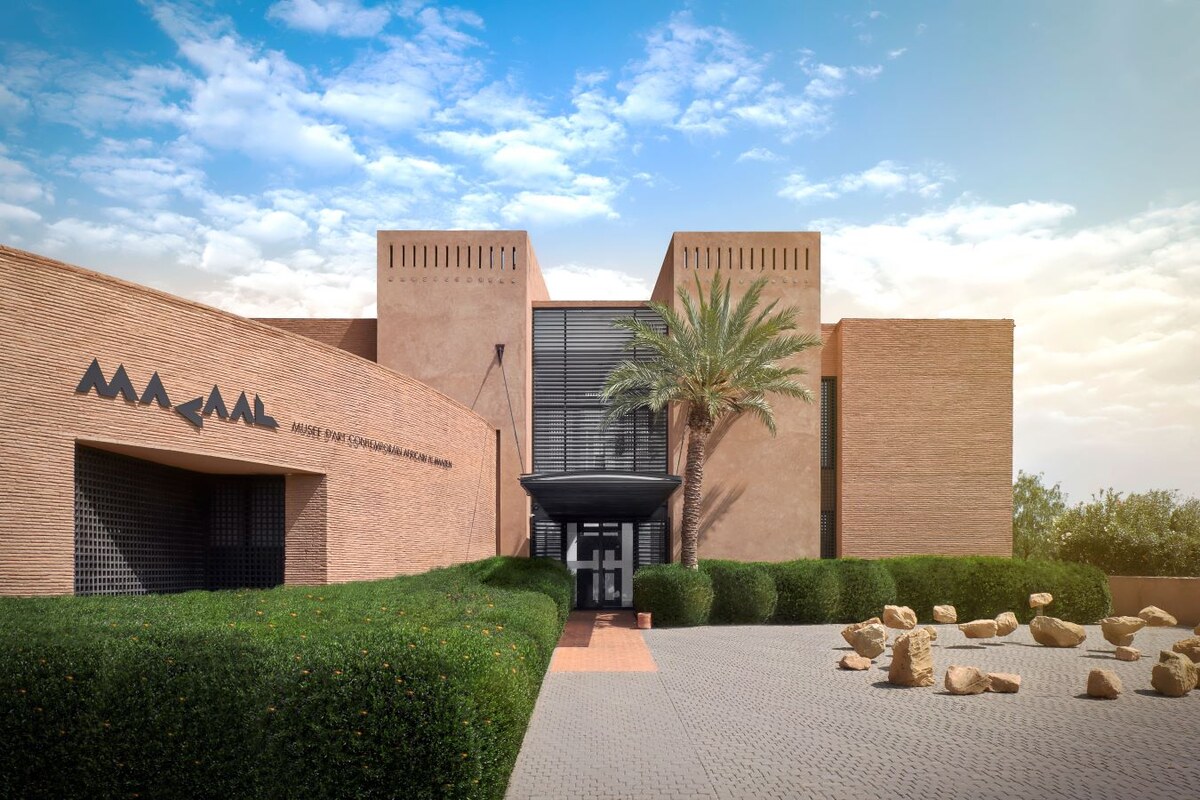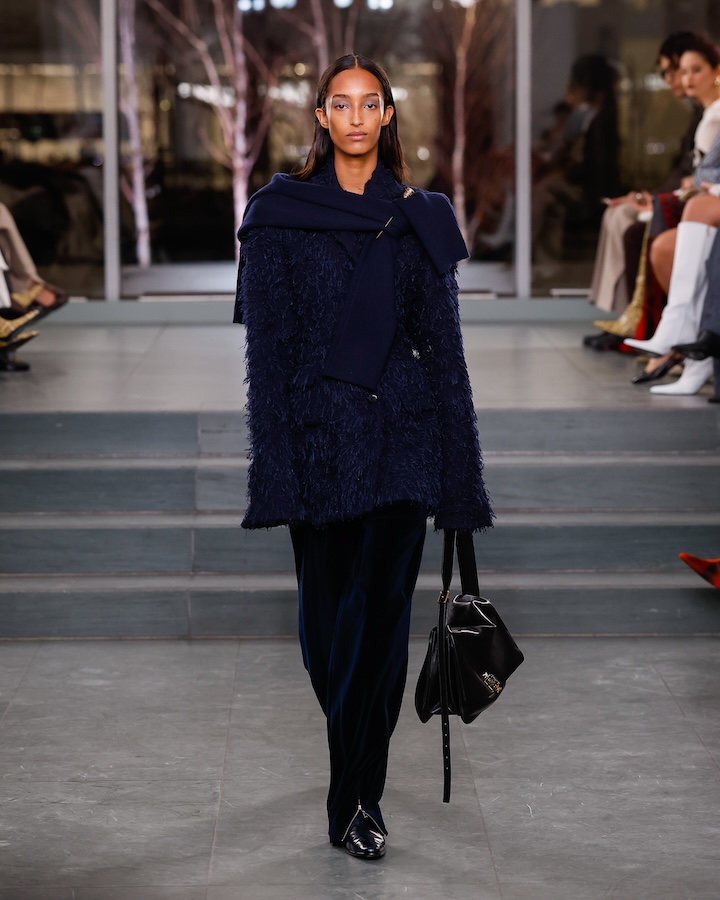DUBAI: The King Abdulaziz Center for World Culture (Ithra) participated in Milan Design Week between Apr. 16 and 21. It was the second time Ithra has taken part in the annual event — a significant entry in Italy’s cultural calendar.
Ithra was founded with the goal of developing Saudi creative talent. Noura Alzamil, the center’s head of programs, has seen its influence mushroom since the beginning and continues to be in awe of her country’s rapidly developing art scene.
“Practicing it and seeing it every day around you and reading about it in articles and seeing that interaction and conversation on a national level, is really heartwarming,” she says.

Lameice Abu Aker's work on show at Milan Design Week. (Supplied)
“We’ve been active for the past 13 years, in collaboration with the Ministry of Culture, doing a lot of enriching programs, activations, bringing in new content and experimenting with our community and exposing them to arts, museums theatre, films,” Alzamil adds. “To me, investing in Saudi minds helps them excel in the future. I believe heavily in taking care of young talents, supporting professionals and having a global conversation.”
Ithra also houses what it bills as the region’s first ‘Material Library,’ displaying a variety of raw design materials. “Artists are all about experimentation,” Alzamil says. “The Material Library hosts hundreds of different materials that designers can come and play with.”
A cornerstone of Ithra’s programming is Tanween, a four-day conference that showcases creative designs from university students and emerging creatives from the region. The products from the conference are then exhibited in public events, such as Milan Design Week.

Joe Bou Abboud's work on display in Milan. (Supplied)
“To me, and to Ithra, it’s really important to showcase our efforts and Saudi and Arab designers in such festivals. Being presented among our peers there is something that we really care about,” says Alzamil. This year, Ithra presented an exhibition of items created by MENA artists in a wide range of mediums in Milan — the first time the center has presented a full show there.
Entitled “From Routes to Roots” and presented in collaboration with Isola (a Milan-based digital platform), the show included glasswork, clay, rugs and lighting. One of the key ideas of the exhibition was to demonstrate how creatives are preserving heritage and the Earth through circular design, which helps to eliminate waste from production.
“They used a lot of integrating bio materials, natural resources, household and industrial waste to come up with these innovative designs and objects that showcase and support sustainability,” Alzamil says.

Part of the 'Routes to Roots' exhibition at Milan Design Week. (Supplied)
Participating creatives hailing from the Levant, North Africa and the Gulf included Marwa Samy Studio, Ornamental by Lameice, Joe Bou Abboud, T Sakhi Studio, Bachir Mohamad, Studio Bazazo, and Mina Abouzahra.
“The exhibition draws inspiration and expertise from ancestral culture pairing it with cutting-edge craftsmanship, in a demonstration of how emerging talents can breathe fresh life into the design landscape, bridging the gap between tradition and innovation,” according to a press release.
Lebanese designer Bou Abboud presented a triad of round lighting fixtures that he says pay tribute to old Qatari jewelry, particularly long necklaces.
One of the more delicate pieces on view came courtesy of Jerusalem-based Palestinian designer Lameice Abu Aker. Her light-toned vases, jugs and drinking glasses are fluid and bubbly. She showcased a molecular-looking, violet vase called “Chemistry!” On Instagram, Abu Aker’s brand posted that the piece is “the perfect fusion of art and science, crafted with precision and care by our skilled artisans. Mouth-blown, every curve and line reflects the magic of the chemical reactions that inspired its name.”
Hanging textiles were also noticeably dominant in Ithra’s display. For instance, Doha-based artists Bachir Mohamad and Ahmad Al-Emadi collaborated on geometrical, symbol-heavy, blue-and-white rugs that are an homage to traditional Gulf Sadu weaving, historically practiced by Bedouins.
“It was really exciting,” Alzamil says of the show. “The team received a lot of visitors and different players in the field. . . It’s bridging the gaps between Saudi and international communities.”
























